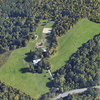Will size cap grow
NEW SCOTLAND Having had two relatively divided meetings, planning board Chairman Robert Stapf is hoping to have a “meeting of the minds” on Tuesday, when the seven-member board is expected to vote on sending its recommendation regarding a law to cap the size of retail buildings to the town board.
The proposed law, which had been sent to the planning board for review by the town board after a contentious meeting that yielded two votes on the bill, includes a cap on the size of single retail or wholesale buildings at 50,000 square feet and a cap on the size of shopping centers at 100,000 square feet.
“I’m curious as to the general premise,” said planning board member Charles Voss of Local Law I, asking the board if it supported restricting large-scale retail development. “I’ve got a problem with restricting land-owners’ rights,” Stapf responded.
“We’ve been working off of the actual zoning document itself,” Stapf said this week. When asked what his differences with the Local Law I were, he began by saying that the Citizens Zoning Advisory Committee, which drew up the law, shouldn’t have continued its work after three out of five members of the committee resigned following accusations of a conflict of interest against the committee’s co-chair, Liz Kormos. The town board named the committee to advise it on bringing New Scotland’s zoning code into line with its comprehensive plan after Sphere Development, based in Cazenovia, N.Y., made public its plans to built a several-hundred-square-foot mall on the former Bender melon farm, at the intersection of routes 85 and 85A.
The committee was only charged with examining the commercial property in town, Stapf went on, but the law that Kormos and Michael Naughton drafted also addresses the industrial zone and hamlets.
The other major disagreement he has with Local Law I, Stapf said, is that it is focused too much on the size cap and doesn’t address professional services or limit residential uses. Kormos and Naughton “just concentrated on the 50,000-square-foot size cap,” he said. “Their blinders were on.”
“The residential use is eating up what commercial use we have left,” Stapf said at the planning board’s workshop meeting last Thursday.
Stapf is suggesting that single- and multi-family homes as well as agricultural uses over five acres change from a permitted use to a special use, which requires further review, he said yesterday.
“We had talked about… four different categories of retail space,” he said of the planning board’s preparation for making its recommendation to the town board. Retail business, small, defines “mom and pop” businesses, Stapf said, which is up to about 10,000 square feet and retail business, large, which covers several buildings together, from 10,000 to 100,000 square feet together. The third level, with a three-mile draw, is a neighborhood shopping center, which is made up of a group of stores between 35,000 and 150,000 square feet. Community shopping center is the largest category, which requires a three-to-six mile draw, and can go up to 300,000 square feet.
“Everybody’s got their opinion,” Stapf said when asked if New Scotland could support a commercial development at the high end of the size scale. It costs around $100 million to conduct the market studies to determine what areas can support a large retail development, he said, concluding, “The risk is up to the developer.”
The square footage in the four size categories outlined by Stapf came largely from the International Council of Shopping Centers as well as from looking at other developments, he said.
Voss said at the meeting that he’d like to see large retail developments come before the town as a planned unit development, commonly known as a PUD. That way the elected town board members would deal with it rather than the appointed planning board, he said.
New Scotland needs “reasonable limitations on development,” Stapf said yesterday. “Fifty-thousand square feet is not reasonable.” Before the area at the intersection of routes 85 and 85A can be developed, water and sewer infrastructure has to be built and road improvements need to be made, Stapf said, which is a cost to be borne by the developer. “We’re talking millions of dollars before you even build,” he said. “That’s why the town of New Scotland has not been developed.”

